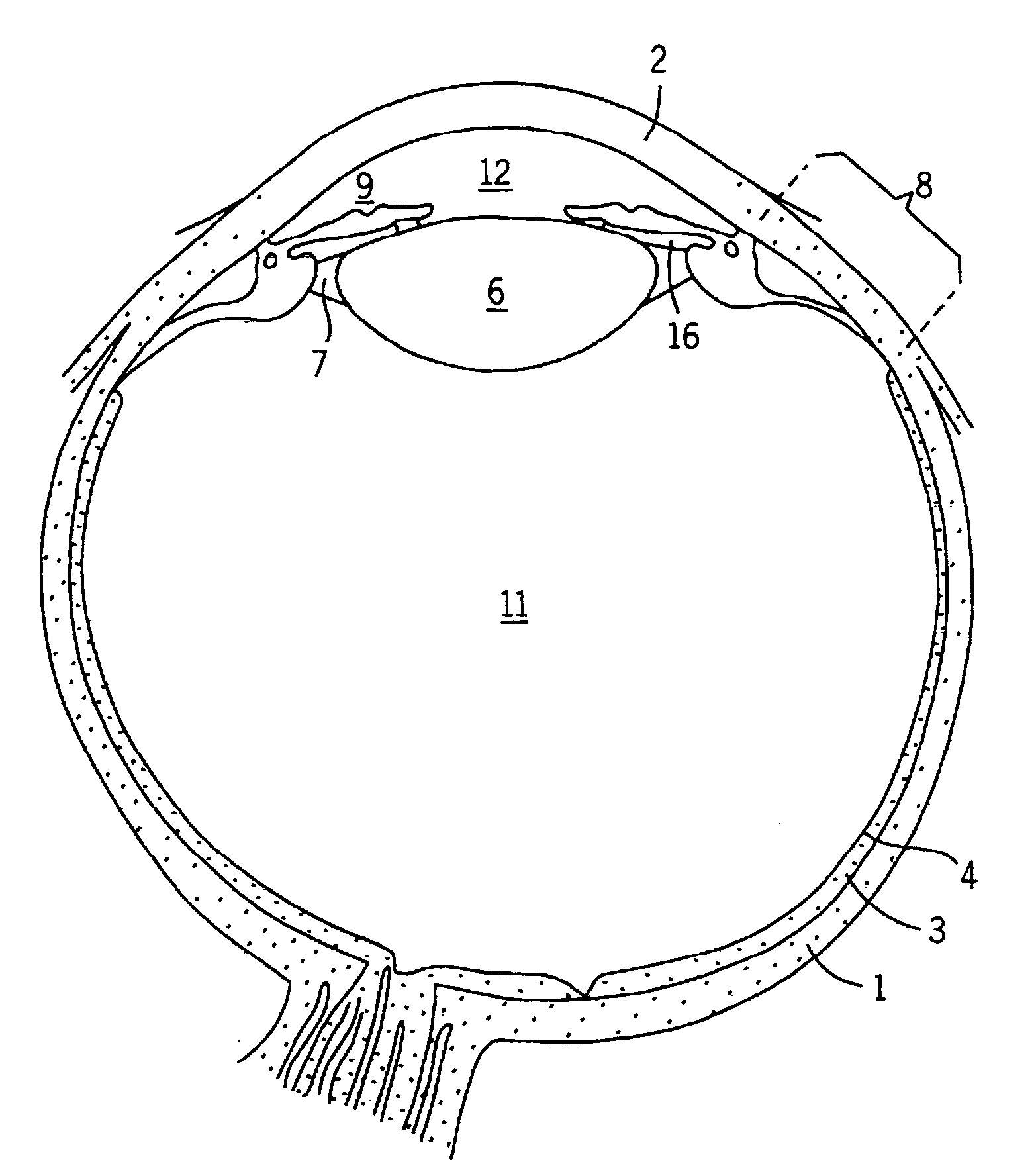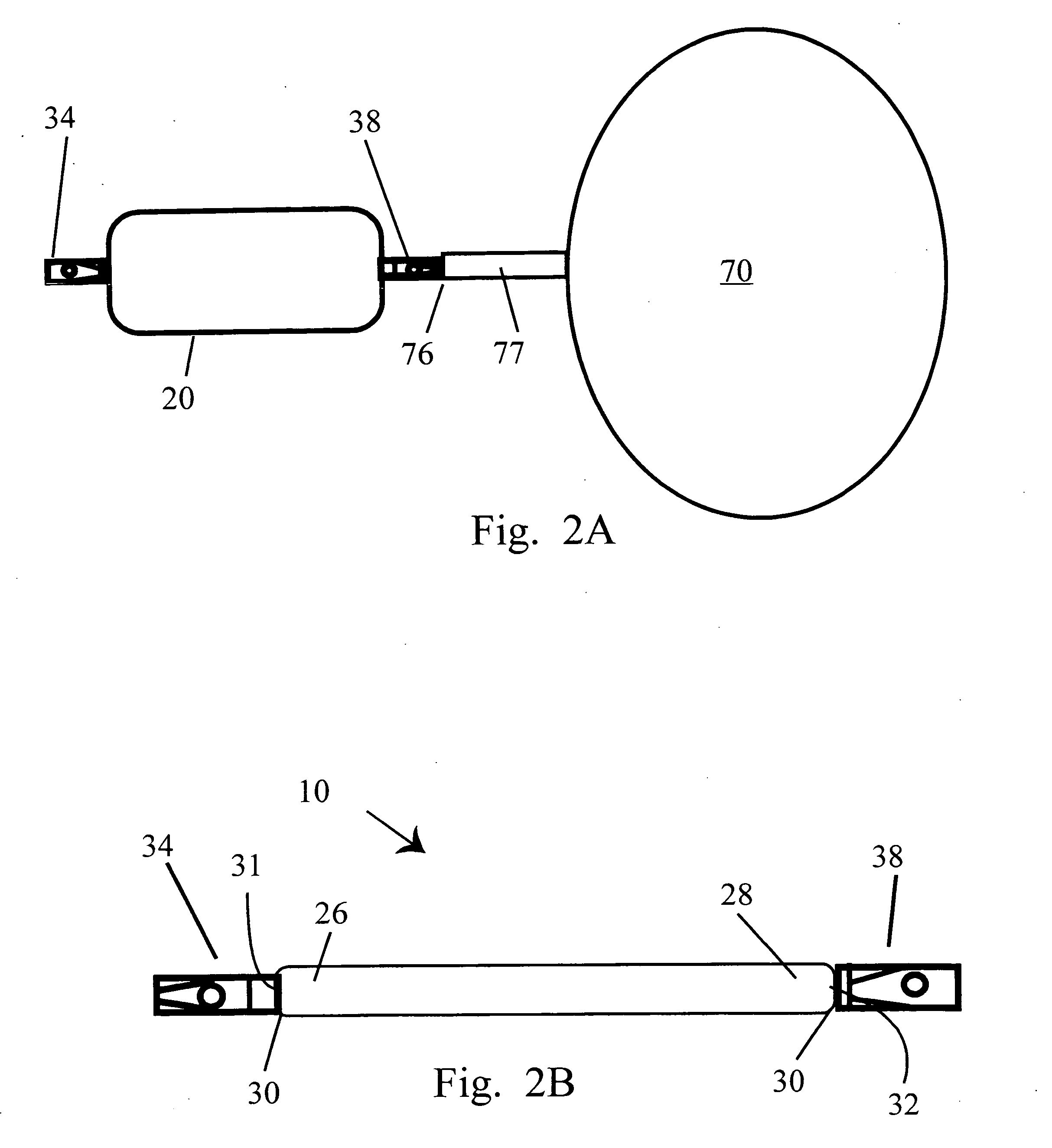Implantable pump apparatuses
a technology of pump apparatus and pump body, which is applied in the direction of machines/engines, positive displacement liquid engines, eye treatment, etc., can solve the problems of long-term damage to surrounding tissue, unreliable or frequent maintenance, and lack of reliable power source, so as to limit the iop (intraocular pressure)
- Summary
- Abstract
- Description
- Claims
- Application Information
AI Technical Summary
Benefits of technology
Problems solved by technology
Method used
Image
Examples
Embodiment Construction
[0041] The major anatomical structures of the eye are shown in FIG. 1. The eye is surrounded by an outer protective layer, the sclera 1. The anterior portion of the sclera 1, the cornea 2, is modified to allow light rays to enter the eye. The choroid 3 resides within the sclera 1 and comprises vasculature which nourishes most of the structures of the eyeball. The posterior portion of the choroid 3 is lined by the retina 4. The retina 4 is composed of the neural tissue containing the receptor cells that receive and process the incoming light rays.
[0042]FIG. 1 also illustrates several other structures of the eye, particularly those areas to be affected by the pump assembly of the invention, generally indicated by the numeral 10. The transparent, biconvex lens 6, one of the refractive media of the eye, is secured by the lens ligament 7 to the ciliary body 8. The ciliary body 8 is the thickened anterior portion of the choroid 3. The iris 9, the “colored” portion of the eye, lies in fro...
PUM
 Login to View More
Login to View More Abstract
Description
Claims
Application Information
 Login to View More
Login to View More - R&D
- Intellectual Property
- Life Sciences
- Materials
- Tech Scout
- Unparalleled Data Quality
- Higher Quality Content
- 60% Fewer Hallucinations
Browse by: Latest US Patents, China's latest patents, Technical Efficacy Thesaurus, Application Domain, Technology Topic, Popular Technical Reports.
© 2025 PatSnap. All rights reserved.Legal|Privacy policy|Modern Slavery Act Transparency Statement|Sitemap|About US| Contact US: help@patsnap.com



